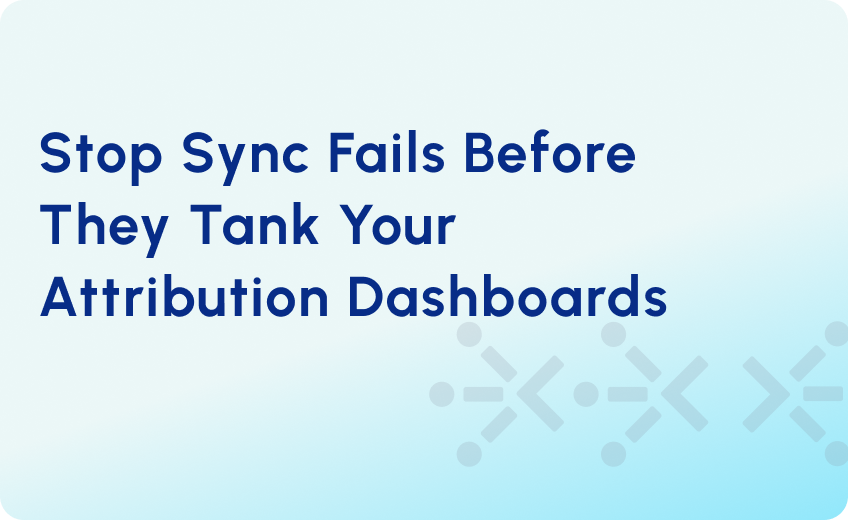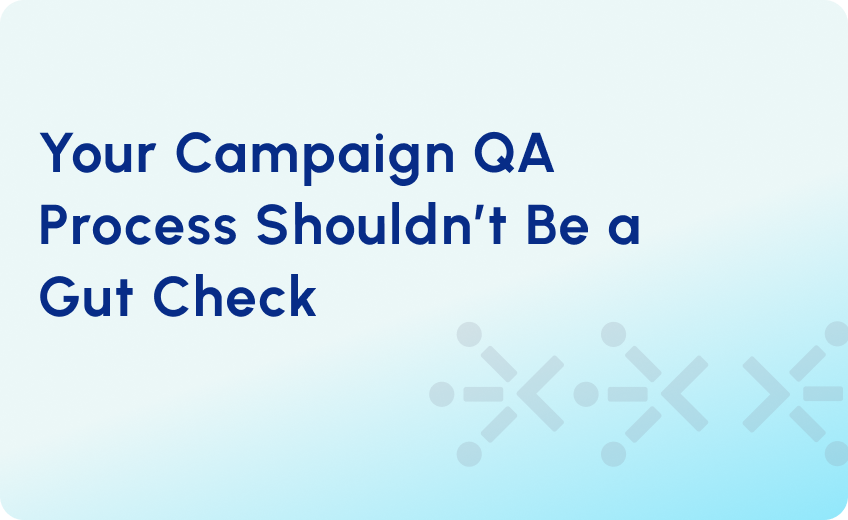
How to Fix Campaign Reporting in HubSpot: A Touchpoint-Based Attribution Model
You’ve moved your team to HubSpot to simplify your tech stack. It works — until you need to report on which campaigns actually drive revenue.
While HubSpot’s native campaign tools are great for organizing assets, they fall short when it comes to attribution — especially for teams used to Salesforce Campaigns. A critical capability your team misses with HubSpot, and it’s only becoming more painful over time: true campaign-level attribution.
Native HubSpot campaigns help organize assets, but they fall short when it comes to showing what actually influenced the deal pipeline, which contacts engaged with which campaigns, or how revenue outcomes tie back to marketing efforts. For anyone used to Salesforce Campaigns, the gap is hard to miss. In Salesforce, campaigns function as structured CRM records with direct associations to contacts and opportunities. You can assign campaign members, track statuses like “Responded” or “Attended,” and link campaigns directly to closed-won revenue. HubSpot doesn’t offer that model out of the box.
This article explains why campaign reporting in HubSpot often falls short and how to build a better model for attribution, influence tracking, and revenue insight using tools already available in your kitty.
What are the Issues with HubSpot’s Native Campaign Attribution?
HubSpot’s campaign attribution features, while user-friendly, have several limitations. The result is a reporting gap. Marketers can see what they sent or what users clicked, but not what actually drove results. Sales teams have no visibility into what campaigns a Contact engaged with, especially when the buying group spans multiple contacts with different engagement histories. And RevOps lacks the data to explain what is really driving pipeline movement.
1. One-to-Many Limitations
HubSpot’s “Campaign” object is fundamentally not a true CRM object. It serves more like a tag that links marketing assets (emails, forms, lists, landing pages) to a marketing initiative, rather than a relational record that directly associates with contacts, companies, or deals.
2. No Campaign Member Status
HubSpot does not let users add contacts, companies, or deals as “members” of a campaign. This restriction prevents tracking nuanced engagement and lifecycle status at the campaign member level when contacts engage with different types of marketing initiatives.
3. “Influenced Contacts” vs. Revenue Attribution
HubSpot considers “Influenced Contacts” as any contact who engaged with any campaign asset or UTM link, even if the touchpoint was minimal (e.g., clicking a single tweet). This “influenced” metric does not reveal which campaigns actually drove revenue or closed-won deals. It further results in lifecycle blind spots that make accurate campaign ROI analysis nearly impossible
4. Difficulty Tying Campaigns Directly to Deals
HubSpot allows reporting on “Deals created” and “Influenced Revenue” on a campaign, but these are based solely on deals associated with contacts who touched campaign assets. There is no native, direct way to relate a specific campaign to a closed-won deal. Workarounds (such as custom properties or manual tagging) are often required, which adds operational overhead and leaves potential for error.
5. Flat Campaign Structure and No Roll-Up Reporting
HubSpot campaigns are “flat”; there is no parent-child relationship. The absence of built-in hierarchy means users must rely on naming conventions or custom external reports to compare or summarize campaign performance across related initiatives.
6. Limited Offline and Import Attribution
When you import Contacts from an event or a static list, HubSpot doesn’t assign the campaign as the first-touch source. This limitation makes it hard to accurately measure the impact of offline events or list-based campaigns without extensive manual adjustment.
Introducing The Touchpoint Framework from RevOps Global
Most reporting challenges in HubSpot stem from one root issue: the lack of a true relationship between campaigns, contacts, and deals. The Touchpoint Framework is designed to solve that. The framework creates a structured way to log and analyze every significant engagement across the funnel. Each meaningful interaction, like a webinar registration, an email click, a paid ad response, a content view, is recorded as a Touchpoint.
Each Touchpoint is:
- Linked to a contact or account
- Connected to the campaign that drove the engagement
- Optionally associated with the deal (if one exists)
- Categorized by engagement type (e.g. paid ad, outbound email, event)
This model can now be implemented even in non-Enterprise tiers, thanks to HubSpot’s expanded support for custom objects and renamed object types.
What the Framework Enables (with Reporting Examples)
Once implemented, the Touchpoint Framework allows teams to build reporting that ties campaign engagement directly to business outcomes. Some of the most used dashboards include:
1. Touchpoints by Engagement
RevOps teams can view which campaigns or content assets are driving the highest volume of meaningful interactions and which are underperforming.
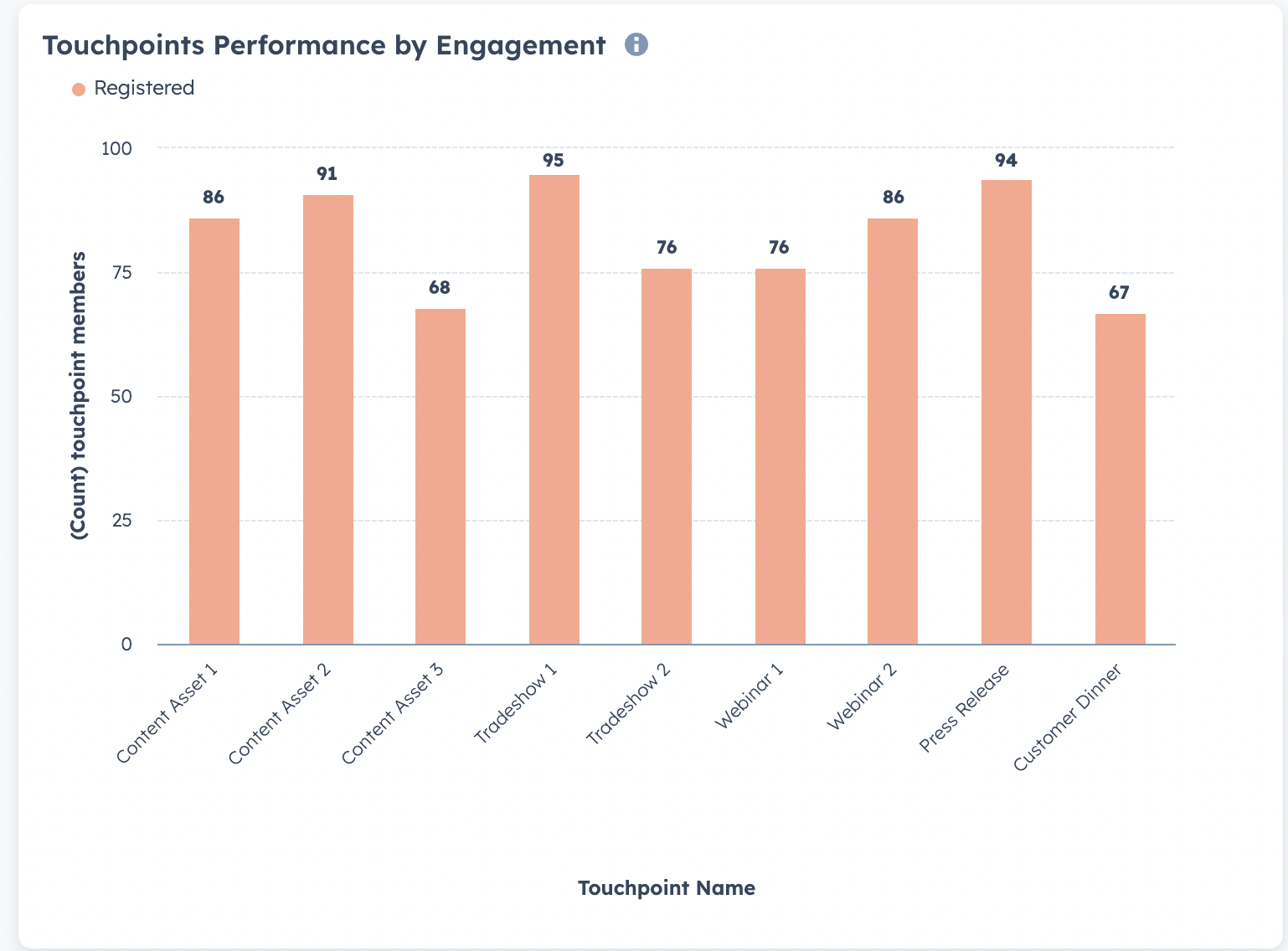
2. Monthly Campaign Influence
You can track changes in campaign effectiveness over time and evaluate impact across months or quarters.
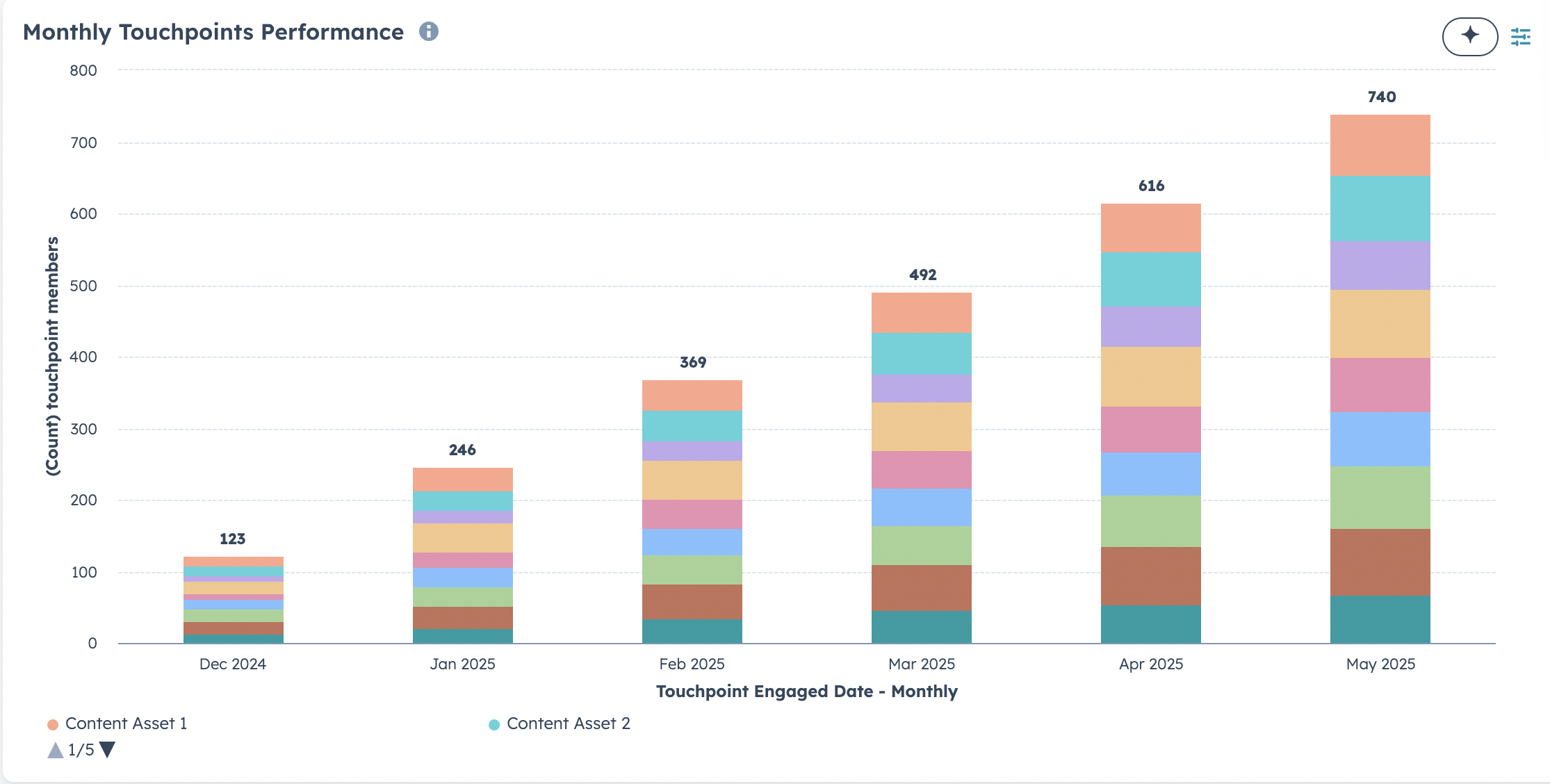
3. Touchpoints by Deal
It helps you understand where specific campaigns are contributing to Contact capture, opportunity creation, or pipeline acceleration.
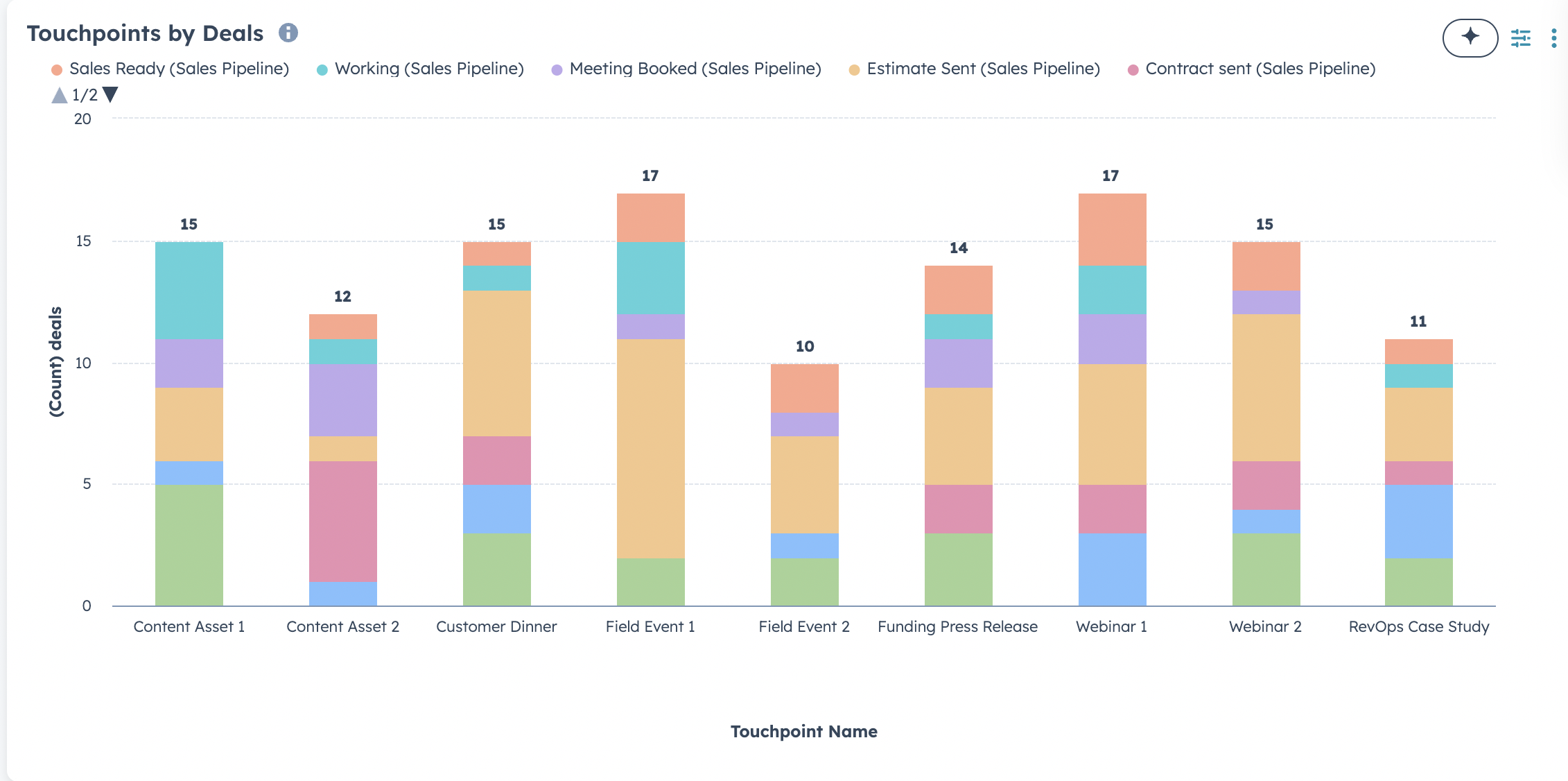
4. Pipeline Influenced by Campaign
Teams can connect marketing efforts to revenue outcomes, not just contact creation. Identify which campaigns consistently influence closed-won deals.
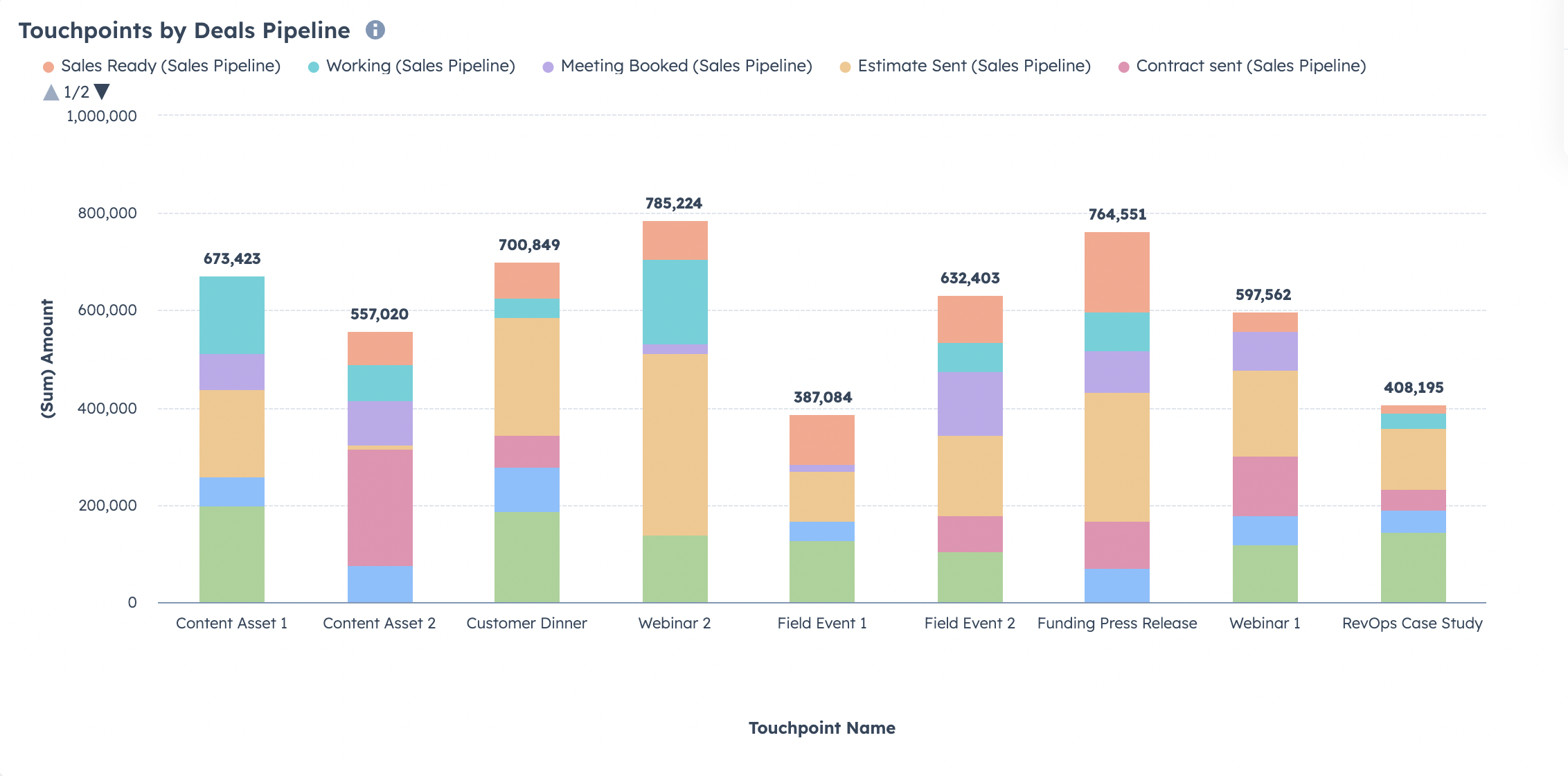
5. Engagement by Type and Source
The touchpoint framework allows you to analyze campaign performance by source (e.g., paid vs. organic vs. outbound) and content type (e.g., webinar, email, guide) to inform budget and resource allocation.

Ways to Extend the Touchpoint Framework
With the right structure, the Touchpoint Framework can do more than track engagement. It can enhance cost visibility and support decision-making campaigns.
By capturing campaign names and UTM data at the point of interaction, marketing teams can automatically tie ad clicks to individual contacts and deals. When spend data is available, teams can calculate metrics like cost per touchpoint or cost per influenced opportunity without leaving HubSpot.
It also supports alignment between sales and marketing. Reps can see what campaigns influenced a contact before a meeting was booked. Marketers can move beyond engagement metrics and report on which efforts consistently contribute to revenue.
Measure Campaign Impact Inside HubSpot with RevOps Global
HubSpot’s native campaign tools are useful for organizing assets, but they fall short when it comes to tracking influence across the funnel. With the right structure in place, teams can shift from activity-based reporting to clear attribution that connects marketing engagement to pipeline and revenue.
RevOps Global helps teams to implement structured attribution models like the Touchpoint Framework using HubSpot’s native features. If you’re looking for more clarity in your campaign reporting and want to understand how specific programs are contributing to business outcomes, we can show you what’s possible.
Want to finally understand which campaigns are truly driving pipeline?



